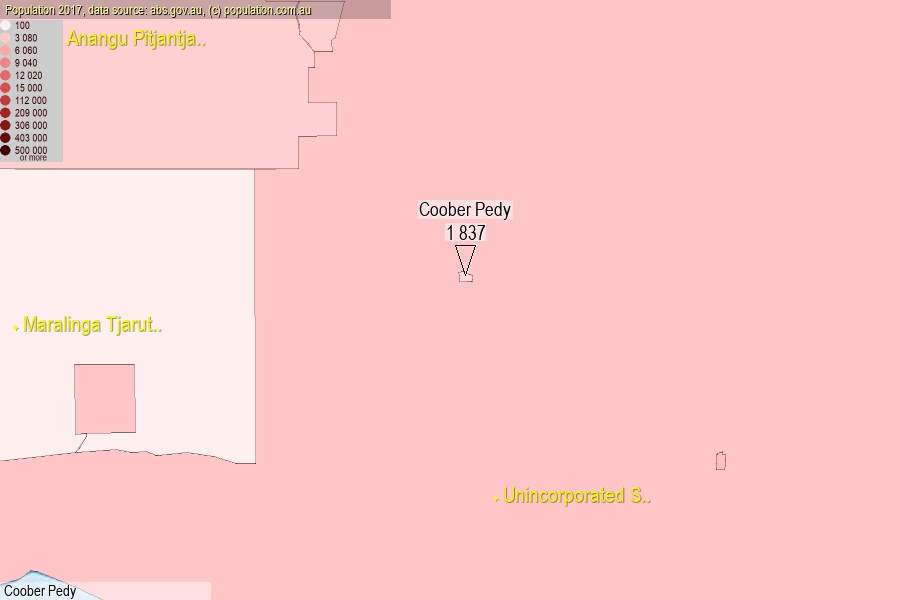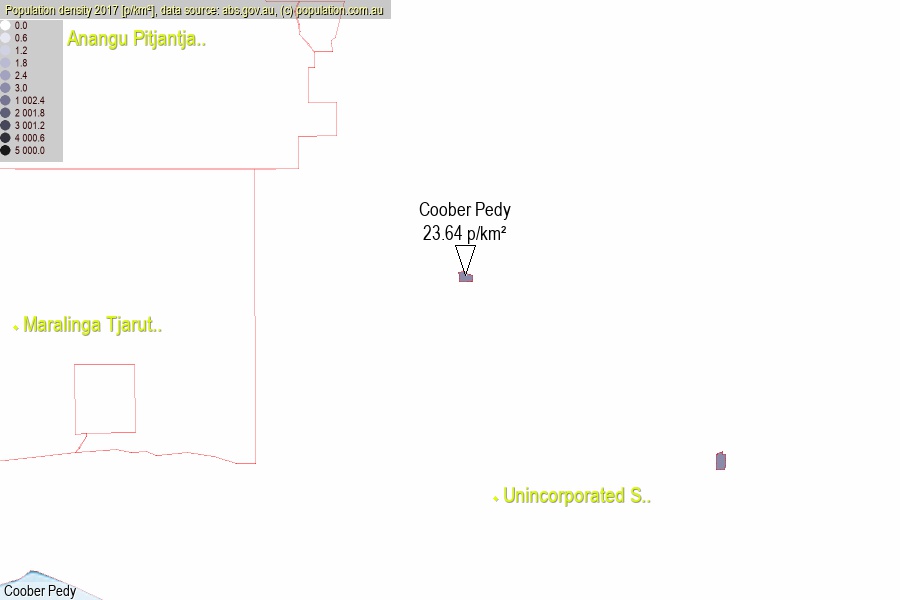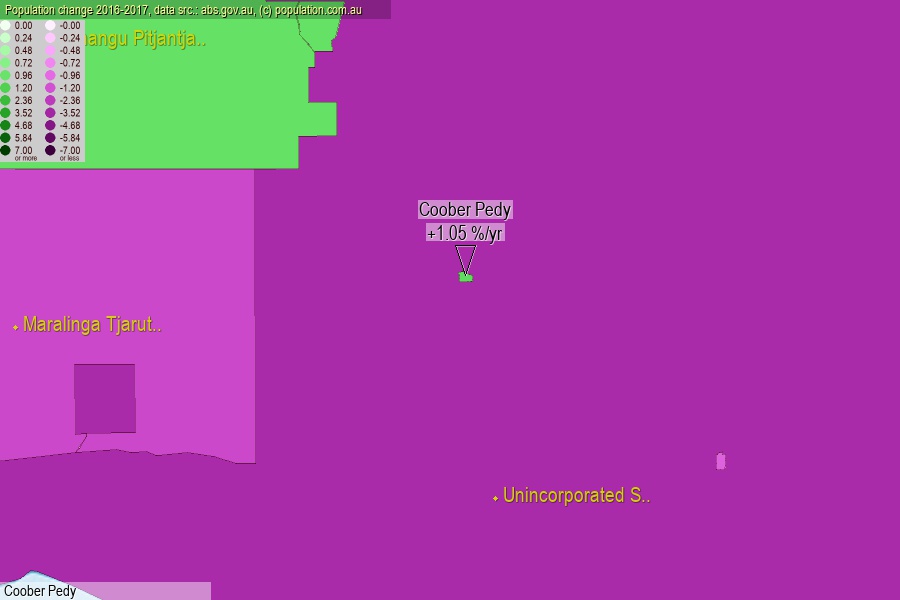 population.com.au
population.com.auLast official estimated population of Coober Pedy District Council (as Local Government Area) was 1 837 people (on 2017-06-30)[2]. This was 0.01% of total Australian population and 0.106% of SA population. Area of Coober Pedy is 77.70 km², in this year population density was 23.64 p/km² . If population growth rate would be same as in period 2016-2017 (+1.05%/yr), Coober Pedy population in 2025 would be 1 996. [0]



Click to enlarge. Coober Pedy is located in the center of the images.
Population [people], population density [p./km²] and population change [%/year] [2]
[1996-2001] -1.98 %/Y
[2001-2002] -4.81 %/Y
[2002-2003] -3.39 %/Y
[2003-2004] -3.15 %/Y
[2004-2005] -5.12 %/Y
[2005-2006] -2.75 %/Y
[2006-2007] -2.82 %/Y
[2007-2008] -3.53 %/Y
[2008-2009] -3.28 %/Y
[2009-2010] -1.00 %/Y
[2010-2011] -1.18 %/Y
[2011-2012] +1.53 %/Y
[2012-2013] +1.34 %/Y
[2013-2014] +0.77 %/Y
[2014-2015] -0.16 %/Y
[2015-2016] -0.22 %/Y
[2016-2017] +1.05 %/Y
[0] Calculated with linear interpolation from officially estimated population
[1] Read more about LGA and Australian Statistical Geography Standard (ASGS) on abs.gov.au
[2] Population data from Australian Bureau of Statistics (Population and density: 2017; change: 2016-2017)
[3] Digital Boundaries: Australian Statistical Geography Standard (ASGS) 2016.